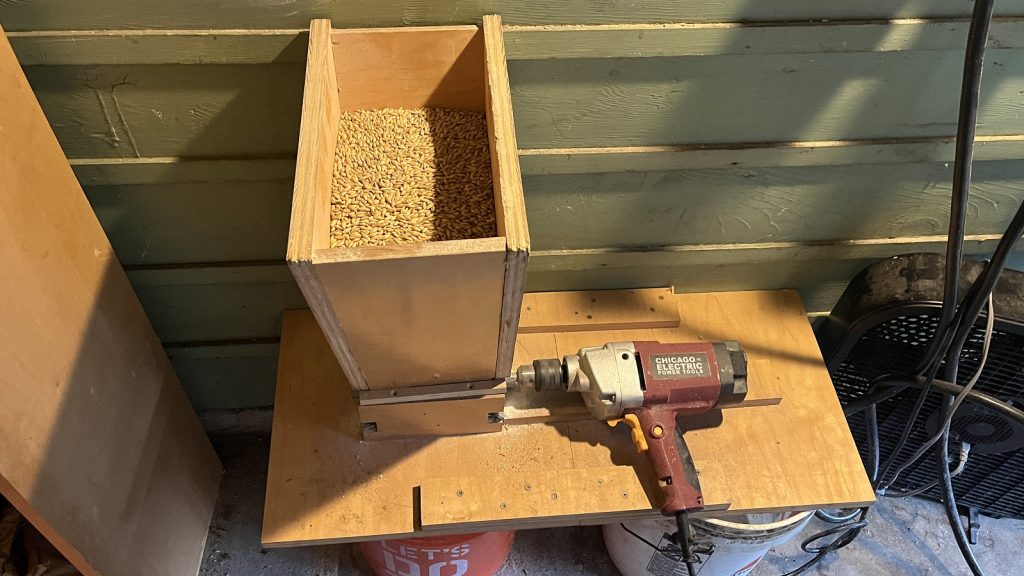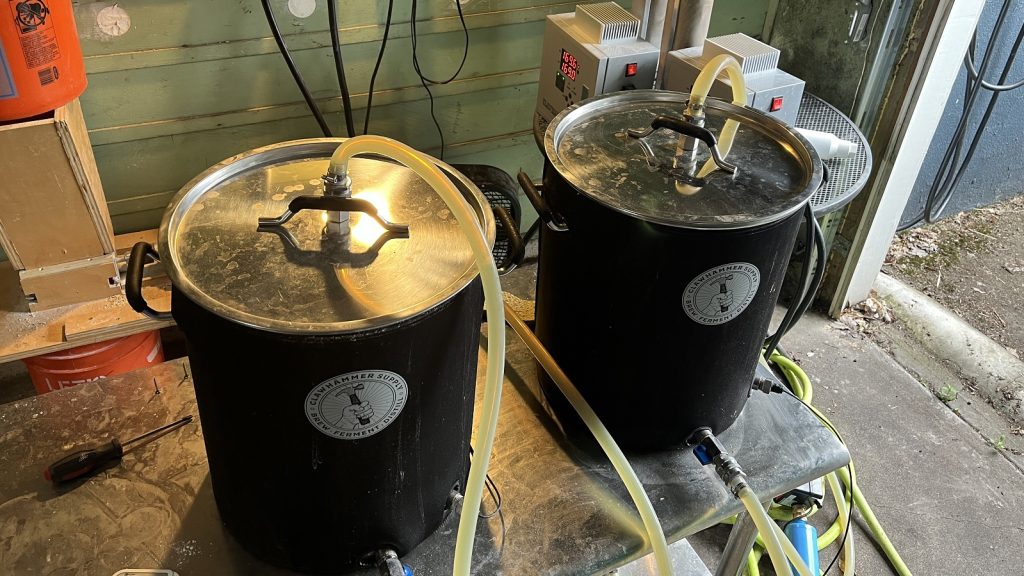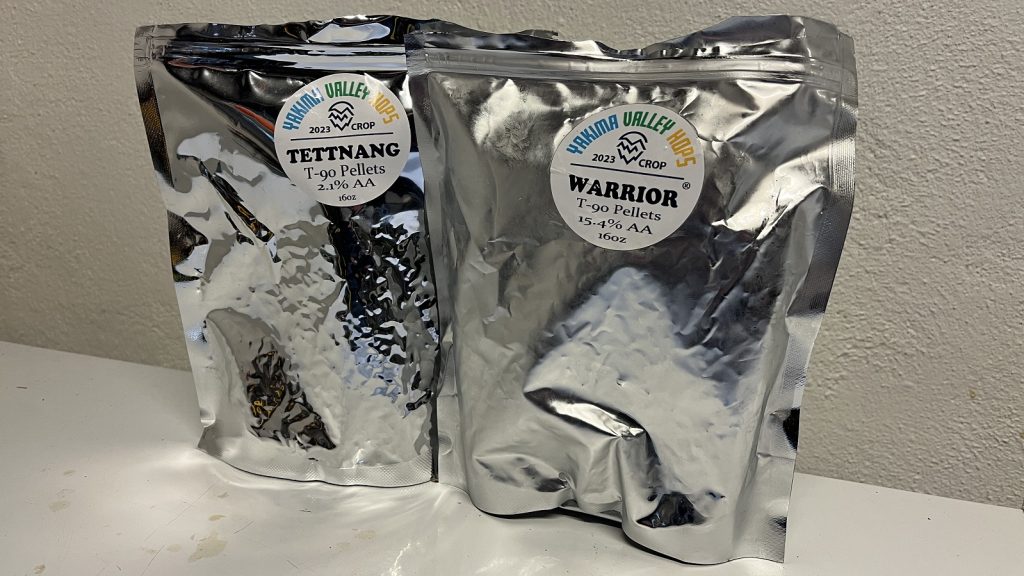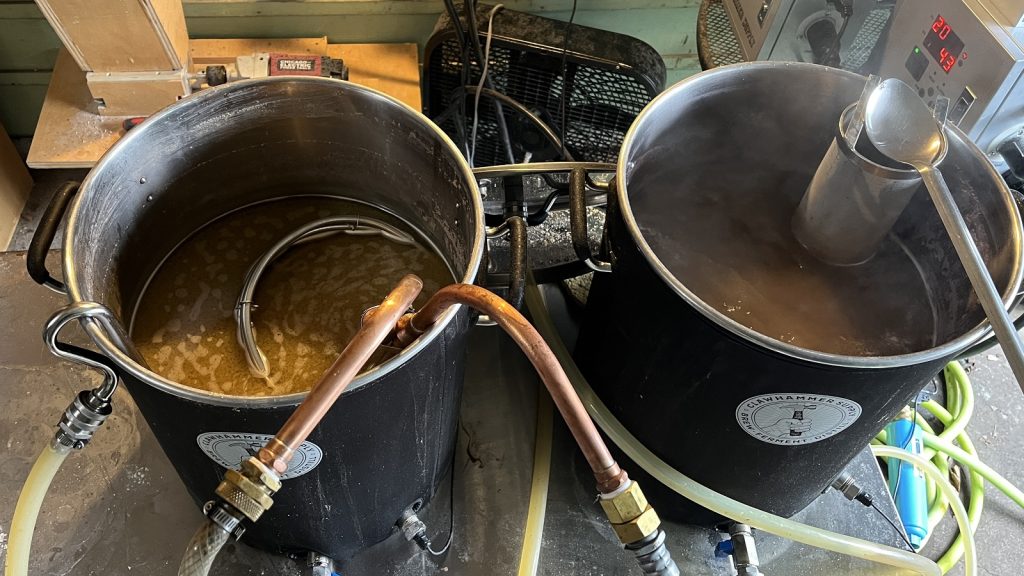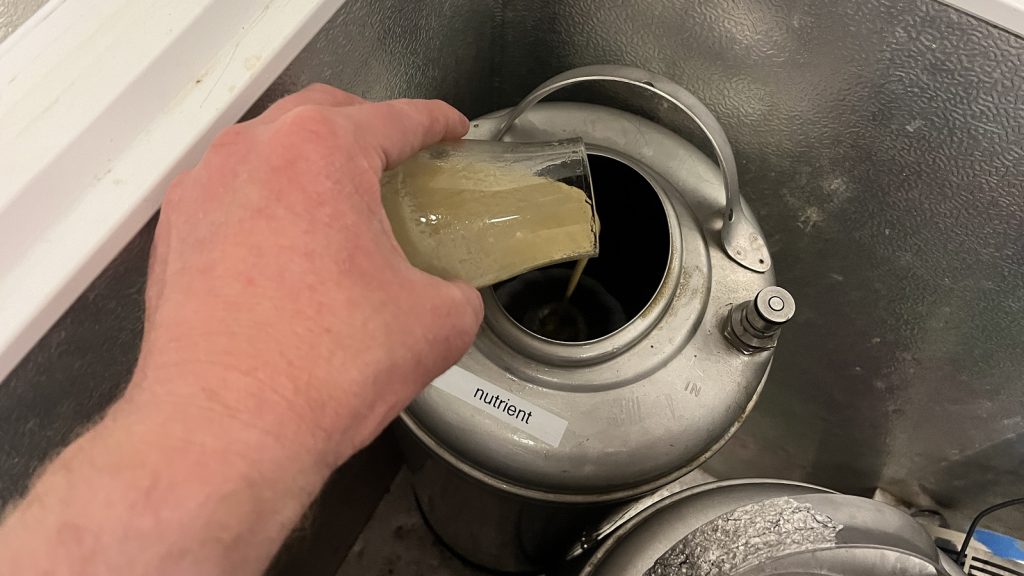Author: Jordan Folks
As is the case with all living organisms, yeast tends to perform best in optimal conditions where they experience minimal stress that can lead to off-flavor development. While arguably important for all fermentations, this is purported to be even more crucial when reusing yeast that previously fermented another beer, as the nutrients present at initial pitch will gradually deplete over the course of multiple fermentations.
Wort naturally contains a number of things that contribute to positive yeast activity such as biotin and nitrogen, but it’s often deficient in other areas, which can lead to problematic fermentations. A popular remedy for this involves adding exogenous nutrient to the boiling wort as a means of ensuring yeast are provided the most hospitable environment within which to work.
With a past xBmt showing tasters could not reliably distinguish a Schwarzbier dosed with yeast nutrient from one made without it, I began to wonder if the impact might be different when fermenting with a more characterful yeast that had been used to ferment prior batches of beer. With a Saison on deck, I took the opportunity to test this one out for myself!
| PURPOSE |
To evaluate the differences between a Saison made with exogenous yeast nutrient and one made with no nutrient addition.
| METHODS |
For this xBmt, I went with a simple Saison recipe that I felt would allow any differences caused by the variable to be on display. Big thanks to F.H. Steinbart for hooking me up with the malt for this batch!
We All Gotta Eat
Recipe Details
| Batch Size | Boil Time | IBU | SRM | Est. OG | Est. FG | ABV |
|---|---|---|---|---|---|---|
| 5.1 gal | 60 min | 28.3 | 3.8 SRM | 1.05 | 1.004 | 6.04 % |
| Actuals | 1.05 | 1.004 | 6.04 % | |||
Fermentables
| Name | Amount | % |
|---|---|---|
| Extra Pale Pilsner | 10 lbs | 86.96 |
| Wheat Malt | 1 lbs | 8.7 |
| Dextrose | 8 oz | 4.35 |
Hops
| Name | Amount | Time | Use | Form | Alpha % |
|---|---|---|---|---|---|
| Warrior | 7 g | 60 min | Boil | Pellet | 15 |
| Tettnang | 57 g | 30 min | Boil | Pellet | 1.8 |
| Tettnang | 57 g | 5 min | Boil | Pellet | 1.8 |
Miscs
| Name | Amount | Time | Use | Type |
|---|---|---|---|---|
| Yeast Nutrient (Imperial Yeast) | 2.5 g | 15 min | Boil | Other |
Yeast
| Name | Lab | Attenuation | Temperature |
|---|---|---|---|
| Rustic (B56) | Imperial Yeast | 76% | 68°F - 80.1°F |
Notes
| Water Profile: Ca 60 | Mg 10 | Na 10 | SO4 100 | Cl 46 |
Download
| Download this recipe's BeerXML file |
After collecting the full volume of filtered tap water for two 5 gallon/19 liter batches, adjusting each to my desired profile, and getting them heating up, I milled the grain.
I opted to perform step mashes for these beers with rests at 144°F/62°C for 60 minutes, 160°F/71°C for 20 minutes, and 170°F/77°C for 10 minutes.
During the mash rests, I weighed out the kettle hop additions.
Once the mash steps were complete, I removed the grains and proceeded to boil the worts for 60 minutes, adding hops at the times listed in the recipe.
At the end of each boil, I quickly chilled the worts before taking refractometer readings showing both were at the same expected OG.
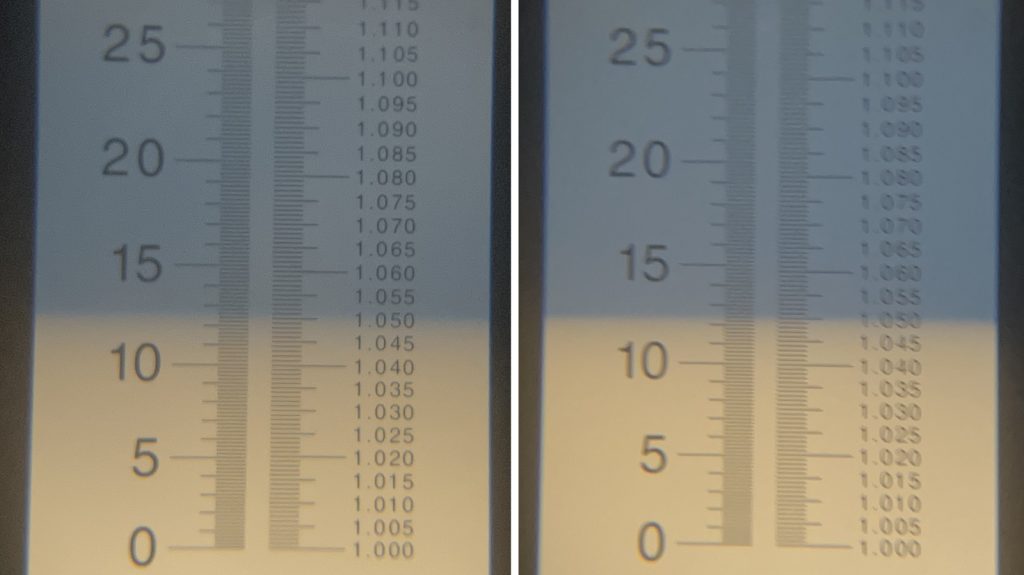
After transferring identical amounts of wort from each kettle to separate fermentation kegs, I prepared the yeast nutrient by combining 2.5 grams with a small amount of water then boiling it in the microwave for 5 minutes before adding it to one batch of wort. Next, I pitched 60 mL of 4th generation Imperial Yeast B56 Rustic slurry into each wort.
The beers were left to ferment at 67°F/19°C for 5 days before I took initial hydrometer readings showing the beer made with yeast nutrient was 0.005 SG lower than one made without exogenous nutrient.
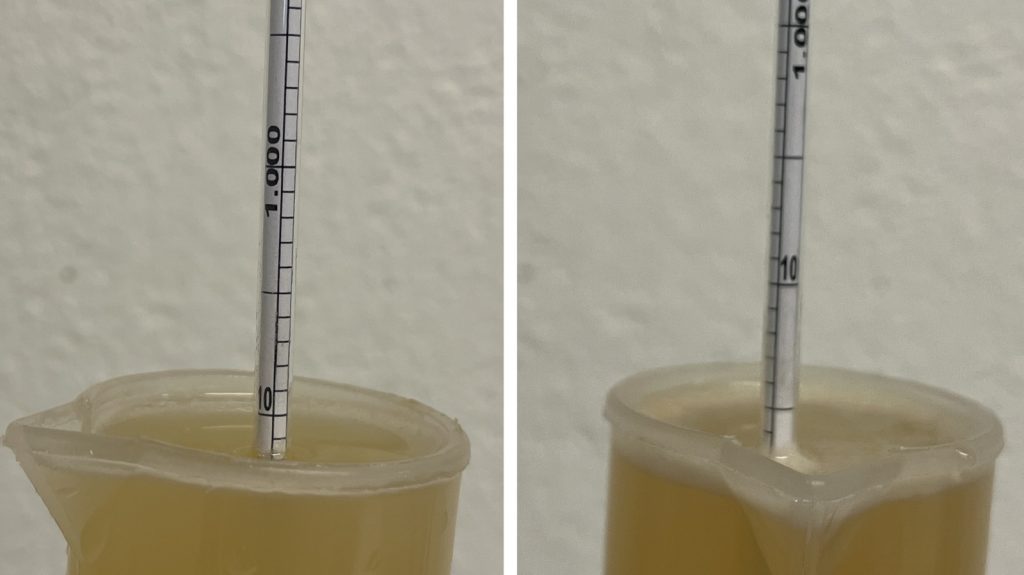
At this point, I began gradually raising the temperature to 75°F/24°C over the following week, at which point I took another set of hydrometer measurements showing both beers were at the same FG.
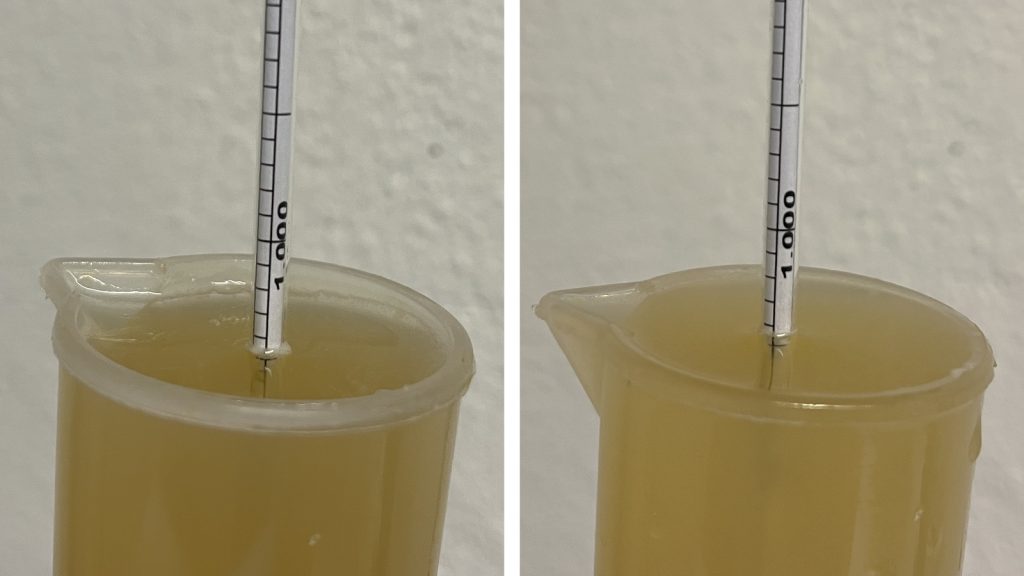
With fermentation complete, I proceeded with packaging, which considering this was a Saison, involved bottle conditioning. The filled bottles were left in my basement for 4 weeks before being chilled and served to tasters for evaluation.

| RESULTS |
A total of 22 people of varying levels of experience participated in this xBmt. Each participant was served 1 sample of beer dosed with exogenous yeast nutrient and 2 samples of the beer made without nutrients in different colored opaque cups then asked to identify the unique sample. While 12 tasters (p<0.05) would have had to accurately identify the unique sample in order to reach statistical significance, only 4 did (p=0.96), indicating participants in this xBmt were unable to reliably distinguish a Saison where exogenous yeast nutrient was added at yeast pitch from one made without a yeast nutrient addition.
My Impressions: Out of the 5 semi-blind triangle tests I attempted, I correctly identified the odd-beer-out just twice. To my palate, these beers had the same aroma, flavor, and mouthfeel, making them indistinguishable. Overall, I was happy with how this beers turned out – crisp and appropriately bitter with balanced esters and phenols.
| DISCUSSION |
It’s commonly said that brewers make wort while yeast make beer, and as such, limiting the amount of stress they experience while taking steps to improve viability is a key factor in producing a quality batch. One way to do this is by using exogenous yeast nutrient, which can lead to reduced lag and faster fermentations, thereby reducing the risk of off-flavor development. Interestingly, tasters in this xBmt were unable to reliably distinguish a Saison where exogenous yeast nutrient was added at yeast pitch from one made without a yeast nutrient addition.
These results seem to indicate that the addition of exogenous yeast nutrient to a Saison fermented with 4th generation yeast had minimal if any perceptible impact; however, it did appear to have some influence on fermentation, as the batch made without a nutrient addition was 0.005 SG points higher than the one made with nutrients at 5 days post-pitch. That said, after another week, both beers were sitting at the same FG, seemingly mitigating any apparent benefit of the yeast nutrient.
Similar to other factors in brewing, the use of exogenous yeast nutrient may very well serve more of a prophylactic purpose, increasing the brewer’s confidence that yeast have what they need to effectively ferment, even if it’s not totally necessary. While I suspect there are situations where a yeast nutrient addition could have a perceptible impact, I’m fine continuing to use it as a means of insurance and will continue doing so, though I won’t fret in those times I either run out or simply forget to add it.
If you have any thoughts about this xBmt, please do not hesitate to share in the comments section below!
Support Brülosophy In Style!
All designs are available in various colors and sizes on Amazon!
Follow Brülosophy on:
FACEBOOK | TWITTER | INSTAGRAM
If you enjoy this stuff and feel compelled to support Brulosophy.com, please check out the Support page for details on how you can very easily do so. Thanks!


